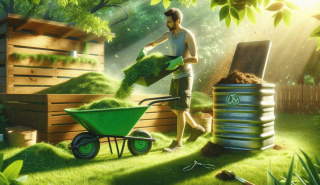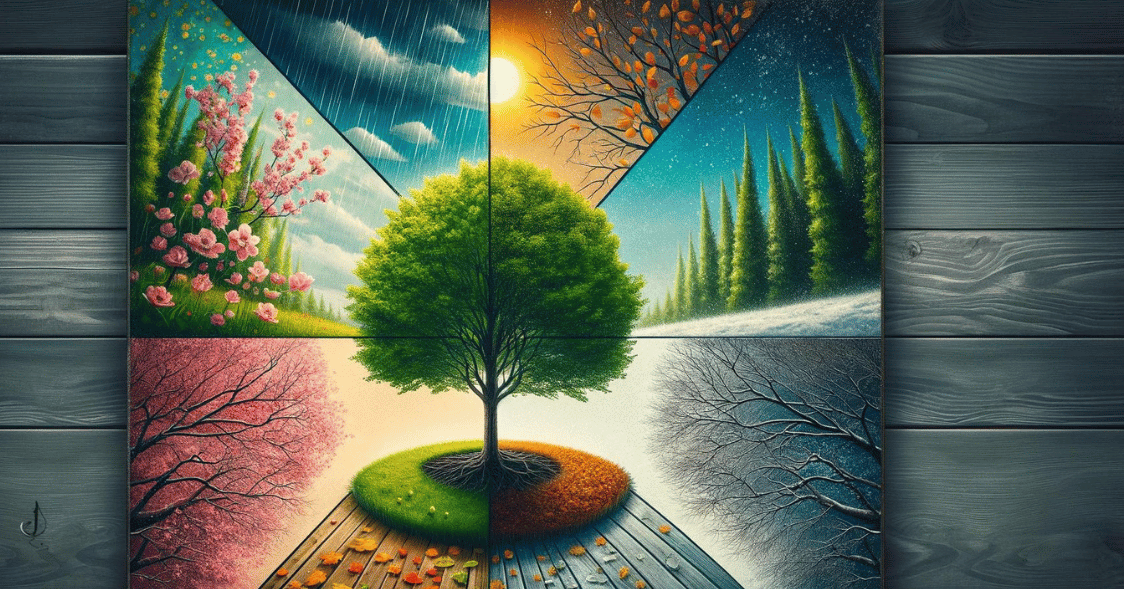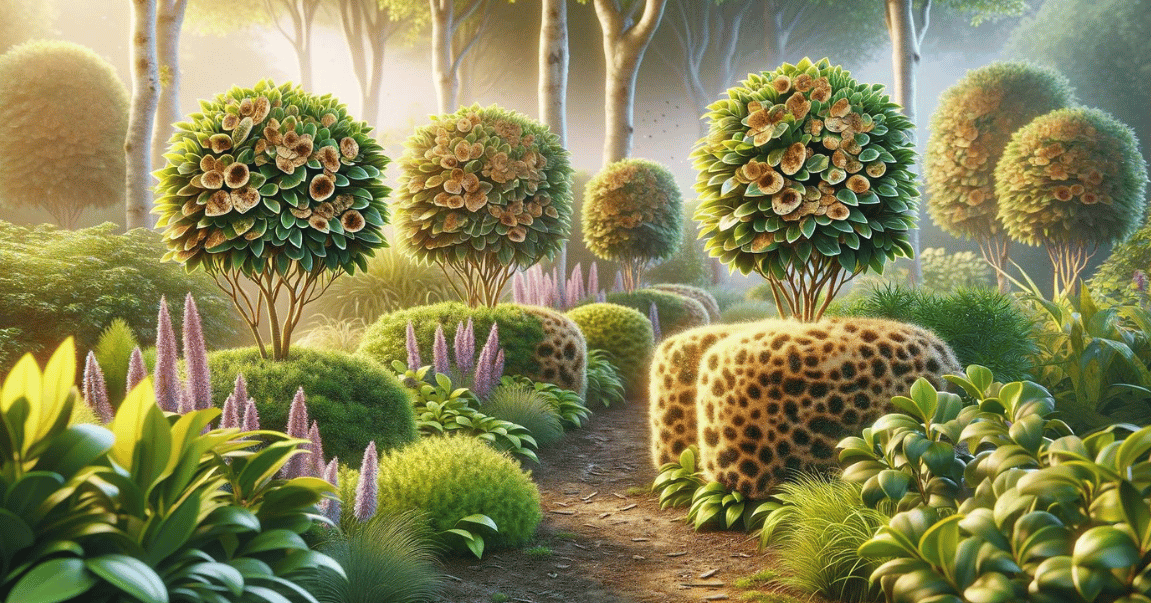After mowing your lawn, you might wonder what to do with the grass clippings. Instead of sending them to the landfill, composting is an environmentally friendly and beneficial method to repurpose these clippings. Composting grass clippings reduces waste and provides nutrient-rich soil for your garden. Let's explore how you can turn your grass clippings into compost effectively.
What Should I Do With Grass Clippings After Mowing?
The answer is simple: compost them! Composting is a natural process that turns organic waste into a valuable amendment for your soil, enhancing its health and fertility. Grass clippings, rich in nitrogen, are an excellent material for composting.
What is Composting?
Composting is an eco-friendly, efficient method of recycling organic waste into a valuable resource for gardens and landscapes. At its core, composting harnesses the natural process of decay to transform kitchen scraps, yard waste, and other organic materials into compost, a nutrient-rich soil amendment. This process not only diverts waste from landfills, reducing methane emissions and the need for chemical fertilizers but also enriches the soil, promoting healthier plant growth and a more vibrant ecosystem.
The Composting Process
The magic of composting lies in the activity of microorganisms such as bacteria, fungi, and other decomposing organisms, including worms and insects. These creatures break down organic matter in the presence of oxygen and moisture, producing compost. The process involves four key components:
- Greens: Nitrogen-rich materials like grass clippings, vegetable scraps, and coffee grounds that provide essential nutrients and moisture for the microorganisms.
- Browns: Carbon-rich materials such as leaves, straw, and shredded paper offer the necessary energy source for the decomposing organisms and help aerate the pile.
- Water: Moisture is crucial for supporting the composting process, helping to break down organic matter into humus.
- Air: Oxygen is needed for aerobic decomposition, the most efficient and odor-free composting method.
Benefits of Composting
- Soil Health: Compost improves soil structure, enhances its ability to hold water, and increases nutrient content, leading to healthier plant growth.
- Waste Reduction: Composting organic waste reduces the volume of garbage sent to landfills, where it releases methane, a potent greenhouse gas.
- Sustainability: Composting supports sustainable gardening and farming practices by returning valuable nutrients to the soil and minimizing reliance on synthetic fertilizers.
- Biodiversity: Compost introduces beneficial microorganisms and insects to the soil, promoting a diverse and healthy ecosystem.
How To Compost Grass Clippings & DIY
Grass clippings are a great addition to the compost pile because they are rich in nitrogen, which helps heat the compost pile and speeds up the decomposition process. However, composting them correctly is essential to avoid issues like odor and matting, which can slow down the composting process.
To Compost Grass Clippings Directly in the Yard:
- Leave the Clippings on the Lawn: One of the easiest ways to nourish your lawn and reduce the need for artificial fertilizers is by leaving grass clippings on the surface after mowing. This method, known as grasscycling, allows the clippings to decompose naturally, enriching the soil with valuable nutrients.
- Mulching: Use a mulching mower that cuts the grass into fine pieces that decompose quickly on the lawn. This adds nutrients back into the soil and saves time and effort in dealing with grass clippings.
To Compost Grass Clippings Traditionally in a Pile or Bin:
- Mix with Brown Material: To maintain a balanced compost, mix grass clippings with brown material, such as leaves, branches, or newspaper, to achieve the correct carbon-to-nitrogen ratio (approximately 30:1). A good rule of thumb is to mix about 50% green materials (like grass clippings) with 50% brown materials.
- Turn Regularly: Ensure the compost pile is turned regularly to aerate it, which helps speed up the decomposition process.
How Long Does It Take For Grass Clippings To Decompose?
The time it takes for grass clippings to decompose in a compost pile can vary, depending on factors like the balance of materials, the weather, and how often the pile is turned. Typically, grass clippings take a few weeks to a few months to fully decompose in a well-maintained compost pile.
How Do You Turn Grass Clippings Into Fertilizer?
Turning grass clippings into fertilizer is a straightforward and environmentally friendly way to enrich your garden soil. Here's a step-by-step guide on transforming grass clippings into a valuable plant resource.
Step 1: Collection and Preparation
- Collect Fresh Clippings: After mowing your lawn, gather the grass clippings. Ensure they are free from chemical treatments or pesticides, which can harm your garden plants.
- Dry the Clippings (Optional): While fresh clippings can be used directly, drying them can prevent issues like mold or unpleasant odors when stored. Spread the clippings in a thin layer under the sun for a day or two until they dry.
Step 2: Direct Mulching
One of the easiest ways to use grass clippings as fertilizer is by spreading them directly over your garden beds. Apply a thin layer (up to 2 inches thick) around your plants. This method helps retain soil moisture and suppress weeds, and as the clippings decompose, they release nutrients back into the soil.
Step 3: Composting
For a more nutrient-rich fertilizer, compost your grass clippings before applying them to the soil.
- Create a Compost Pile: Add your grass clippings to a compost pile, alternating layers with brown carbon-rich materials like dry leaves, straw, or shredded paper to maintain a balanced carbon-to-nitrogen ratio.
- Maintain Moisture and Aeration: Keep the compost pile moist and turn it regularly to ensure proper aeration and speed up the decomposition process.
- Decomposition: Over time, the grass clippings will break down within the compost pile. Depending on temperature, moisture, and pile management, this process can take a few weeks to several months.
Step 4: Application of Compost
- Mature Compost: Once it has turned into a dark, crumbly, earthy-smelling material, it will be used as fertilizer.
- Apply to Garden Beds: Spread the compost around your plants or mix it into the top layer of soil. This will provide a slow-release source of nutrients, improving soil structure and fertility.
Conclusion
Composting grass clippings is an excellent way to recycle lawn waste, improve soil health, and support sustainable gardening practices. Following these simple steps, you can create valuable compost from grass clippings and contribute to a healthier environment.
For expert tree care and more plant healthcare tips in Delaware, Pennsylvania, and New Jersey, contact Strobert Tree Services. Our team is dedicated to providing top-notch tree care and helping you maintain a beautiful, healthy outdoor space.











